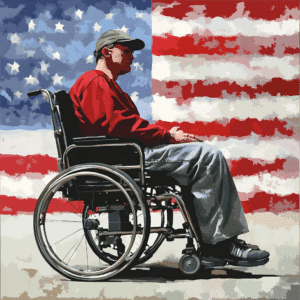Navigating the labyrinth of addiction recovery often presents a host of challenges, with discrimination based on race, gender, and socioeconomic status proving to be substantial stumbling blocks for many. To foster a more inclusive and just environment for all individuals seeking to overcome addiction, it’s imperative to spotlight and address these disparities. Through Addressing discrimination in recovery, this article delves deep into the nuances of discrimination within recovery methods and proposes comprehensive strategies for creating a more equitable recovery landscape.
Identifying Discriminatory Practices in Recovery Programs
While many recovery programs aim to provide universal help, biases often seep into the system, consciously or unconsciously discriminating against individuals. Here, we examine several examples and sources of discriminatory practices:
Racial Bias in Access to Treatment
Black and Latino communities frequently encounter barriers to accessing quality addiction treatment. Studies by the Substance Abuse and Mental Health Services Administration (SAMHSA) reveal that these groups are less likely to receive medication-assisted treatments (MATs) compared to their white counterparts. Programs like Hazelden Betty Ford Foundation have been scrutinized for not adequately serving diverse populations. This racial bias is a significant deterrent for those seeking help, creating a gap that needs to be addressed urgently.
Gender Disparities in Recovery
Gender bias is another critical issue, particularly affecting women. Organizations such as Women For Sobriety highlight the challenges women face, including societal stigma and the necessity for women-centric support systems. Despite such initiatives, mainstream programs often overlook specific issues like domestic violence and child care, predominantly impacting women seeking recovery. Neglecting these unique needs exacerbates the difficulty for many women to successfully navigate recovery.
Strategies to Combat Discrimination in Recovery
Addressing discrimination in recovery involves a multi-faceted approach that includes policy reform, community engagement, and educating stakeholders. The following strategies provide a blueprint for change:
Supporting Culturally Competent Care
Integrating culturally competent care into recovery programs is essential. This requires training healthcare providers to understand and respect the cultural backgrounds of their clients. Programs like the Boston Medical Center’s OBAT (Office-Based Addiction Treatment) have successfully incorporated culturally tailored services, resulting in improved outcomes for underserved populations. Emphasizing a culturally sensitive approach ensures no one is left behind due to their background or cultural identity.
Expanding Gender-Specific Treatment Options
Programs must expand to offer gender-specific treatments that address the unique needs of different genders. New Directions For Women, a leading rehabilitation center, has seen success by tailoring its programs specifically to women, including pregnant women and mothers. Embracing such focused treatment methods can bridge the gap in support for various gender needs, ensuring all individuals receive the care they require.
Policy Reforms to Ensure Fair Access
Advocating for policy reforms that ensure fair access to care is non-negotiable. Legislations like the SUPPORT for Patients and Communities Act have made strides, yet gaps remain. Community organizations can play a pivotal role by lobbying for local policies that mandate equity in treatment allocation. Promoting equality, diversity, and inclusion within these frameworks can lead to significant changes at the institutional level.
| Topic | Description | Examples/Steps |
|---|---|---|
| Understanding Discrimination in Recovery | Discrimination in recovery can manifest as unequal treatment based on race, gender, age, socioeconomic status, and more. | – Recognize different types of discrimination (e.g., racial, gender, age-related) |
| Identifying Instances of Discrimination | Knowing the signs and document instances when discrimination has occurred. | – Look for unequal access to services, derogatory language, or preferential treatment |
| Informal Resolution | Sometimes, simply discussing the problem with the provider can be effective. | – Speak directly with the health or care provider involved |
| Formal Complaint Procedure | When informal resolution fails, a formal complaint can be lodged with the provider. | – Explain what happened in detail, provide relevant dates, times, and names of those involved |
| Promoting Equality, Diversity, Inclusion | Implementing practices that reduce discrimination can foster a more inclusive environment. | – Provide person-centred care, respect and acknowledge the diversity of individuals |
| Person-Centred Care | Treating each individual as unique and catering to their specific needs rather than applying a one-size-fits-all approach. | – Tailor care plans to each person’s cultural, emotional, and physical needs |
| Legal Support and Rights | Knowing the legal rights regarding anti-discrimination can empower and protect individuals in recovery. | – Familiarize with relevant anti-discrimination laws and patient rights |
| Support Networks | Providing support and resources for those experiencing discrimination in recovery can help mitigate negative effects. | – Join support groups, consult with advocacy organizations like Mothers Against, leverage family and community support |
| Training and Education | Educating caregivers and health providers about discrimination and inclusive practices can reduce instances of discrimination. | – Regular training sessions on cultural competency, anti-discrimination laws, and inclusive practices |
| Outcomes of Addressing Discrimination | Effectively addressing discrimination can lead to a more supportive and effective recovery environment, enhancing overall outcomes for individuals. | – Improved mental health, better recovery rates, enhanced trust in health providers |
Community-Driven Solutions: Case Studies of Success
Building inclusive recovery environments often depends on grassroots movements and community-driven initiatives. Here are a few exemplary case studies:
The Healing Place: A Model for Inclusivity
The Healing Place in Louisville, Kentucky, embraces a peer-driven model of recovery that caters to individuals from various backgrounds. By removing the financial barriers to entry, they have created a space that welcomes everyone, regardless of economic status. Their success serves as a stellar example of how community engagement can make recovery accessible to all.
Sobriety House and LGBTQ+ Inclusiveness
Sobriety House in Denver, Colorado, is another torchbearer for inclusive recovery programs, offering specialized services for the LGBTQ+ community. Recognizing the specific challenges faced by LGBTQ+ individuals, they provide a safe environment that respects and understands their unique experiences. Such inclusive environments foster trust and promote successful recovery among marginalized communities.
Leveraging Technology for Equitable Recovery
In the digital age, technology can be a major equalizer in overcoming discrimination in recovery.
Telehealth Services and Accessibility
Expansion of telehealth services makes treatment accessible, particularly for those in remote or underserved areas. Programs like the Hazelden Betty Ford Foundation’s telehealth services extend their reach, providing support across geographical and social barriers. This technological solution ensures that even those who are geographically isolated can receive the care they need.
AI in Tailoring Recovery Plans
Artificial Intelligence can personalize recovery plans based on individual needs. Applications like Sober Grid leverage AI to connect users with support systems that understand and cater to their specific recovery journey. With such advancements, technology brings personalized care to the forefront, promoting inclusive recovery solutions.
Personal Stories: Voices of the Underserved
To truly understand the impact of discrimination in recovery, one must listen to the stories of those affected. Personal narratives, like that of Maya Johnson, a Latina woman who struggled to find culturally sensitive care, or Derek Williams, an African American man who faced racial bias in treatment programs, underscore the critical need for reform and advocacy. These voices highlight the lived experiences of those who have encountered systemic barriers, reinforcing the urgency for comprehensive change.
Shaping the Future of Recovery
The path forward in tackling discrimination within recovery methods involves continuous evaluation, community collaboration, and unwavering commitment to inclusivity. By examining current shortcomings and pioneering inclusive strategies, we can create recovery environments where everyone, irrespective of their background, has a fair chance at healing and a better future. Together, we can build a more just and compassionate world for those on the journey to recovery.
Addressing discrimination in recovery is not just an aspiration but a necessity. At Mothers Against Addiction, we are dedicated to empowering parents and promoting empathy for addicts. By championing policy reforms, integrating culturally competent care, and leveraging technological advancements, we can foster a recovery landscape that honors and respects the dignity of every individual.
Addressing Discrimination in Recovery
Why It Matters
Discrimination in recovery isn’t just an additional hurdle; it’s a massive barrier that affects numerous people daily. Did you know that factors like socioeconomic status and location dramatically influence recovery outcomes? For instance, how a community handles something as fundamental as What Is escrow in mortgage can mirror the systemic biases people face. Simply put, discrimination doesn’t just disappear when someone starts their recovery journey. It follows them, like an unwanted shadow.
Trivia & Interesting Facts
Recovery isn’t always a level playing field. Take a moment to consider the weather’s impact on wellbeing. Clima en el Bronx can significantly affect emotional health, thus influencing recovery success rates. Yes, even the weather can play a part! And speaking of financial concerns, financial instability can make it hard to focus on recovery. The home equity loan definition can be a game-changer for many, providing a much-needed financial boost that can make or break the journey to sobriety.
More to Ponder
Social support networks are also crucial. Ever noticed how much easier it is to tackle tough tasks with a sturdy support network? The difference in supportive environments can be staggering. Communities with engaged support systems typically have better recovery outcomes. So, the next time you wonder about the complexities in recovery, think about all these little elements that pile up.
Addressing discrimination in recovery is about looking at the full picture, recognizing these nuances, and ensuring they’re acknowledged. From weather patterns to financial tools, every bit counts in making recovery accessible and effective for everyone. Let’s work together to break down these barriers.
How would you address or resolve the discrimination?
You can handle discrimination by working in ways that respect and embrace everyone’s differences. Promote equality and treat each person as a unique individual, rather than lumping everyone together. Respecting diversity and providing person-centered care can make a huge difference.
How do you challenge discrimination in care?
Challenging discrimination in care involves calling it out when you see it, and standing up for those being treated unfairly. Educate others about the importance of equality and inclusion, and remind them that every individual deserves to be treated with respect and dignity.
How can we reduce discrimination in care?
Reducing discrimination in care can be achieved by promoting practices that support equality and diversity. This means providing person-centered care and respecting the unique qualities and needs of each individual rather than adopting a one-size-fits-all approach.
How do you recover from discrimination?
Recovering from discrimination involves seeking support from trusted friends, family, or professionals who can provide emotional help. It’s also important to stand up for your rights by making a formal complaint if needed.
What are the strategies to address discrimination?
Strategies to address discrimination include educating yourself and others about the importance of diversity and inclusion, being aware of biases, and taking proactive steps to ensure fair treatment for everyone.
How to resolve discrimination conflict?
To resolve discrimination conflict, start by addressing it informally and talking it over. If that doesn’t help, make a formal complaint using the provider’s complaints procedure, detailing what happened, along with relevant dates, times, and names of those involved.
What is an example of discrimination in a care setting?
Discrimination in a care setting could look like a caregiver providing less attentive service to someone because of their race, age, or disability. It’s unacceptable and must be challenged.
How to address discriminatory practices to encourage positive change?
Addressing discriminatory practices involves creating an environment where diversity is valued and everyone’s unique needs are met. Encourage open discussions about diversity and inclusion and make it clear that discrimination won’t be tolerated.
What to do if you are facing discrimination?
If facing discrimination, document what’s happening and report it through the proper channels, such as the provider’s complaints procedure. Seek support from friends, family, or organizations designed to help in these situations.
How to solve discrimination in healthcare?
Solving discrimination in healthcare requires implementing policies that promote diversity and inclusion, and educating healthcare workers on the importance of equality. Ensuring everyone gets the same level of care regardless of their background is key.
What is an example of indirect discrimination?
An example of indirect discrimination could be a rule that applies to everyone but disadvantages a particular group more than others. For instance, a policy requiring all employees to work on Saturday may adversely affect those who observe it as a religious day of rest.
What is an example of a discriminatory attitude?
A discriminatory attitude might be a nurse showing impatience or making derogatory remarks towards patients from a certain ethnic background. It’s harmful and shouldn’t be tolerated.
What are the three ways to challenge discrimination?
Three ways to challenge discrimination are: speaking up when you see or experience it, supporting those who are affected, and promoting education and awareness about fairness and inclusivity.
How can discrimination be reduced?
Discrimination can be reduced by fostering an environment where diversity is celebrated and everyone’s differences are respected. Education is key, along with implementing policies that ensure everyone is treated fairly.
What is the remedy for discrimination?
The remedy for discrimination might include a formal complaint process, seeking legal advice, or finding support through friends, family, or organizations dedicated to protecting against discrimination.
How would you address discrimination in the workplace?
Addressing discrimination in the workplace involves creating a culture where diversity and inclusion are valued and making sure there are clear policies against discrimination. Training and awareness programs can help too.
How can discrimination be resolved?
Discrimination can be resolved by addressing the issue head-on, whether informally through discussion or formally through the complaints procedure. It’s important to document instances and seek support if needed.
How would you deal with discrimination in the workplace?
Dealing with discrimination in the workplace means speaking up, documenting the incidents, and reporting them through the proper channels. It’s essential to foster a supportive environment where everyone feels valued.
What is the best way to handle discrimination?
The best way to handle discrimination is to address it immediately, either through informal discussion or formal complaints. Educating oneself and others about equality and fostering an inclusive environment is essential too.




























